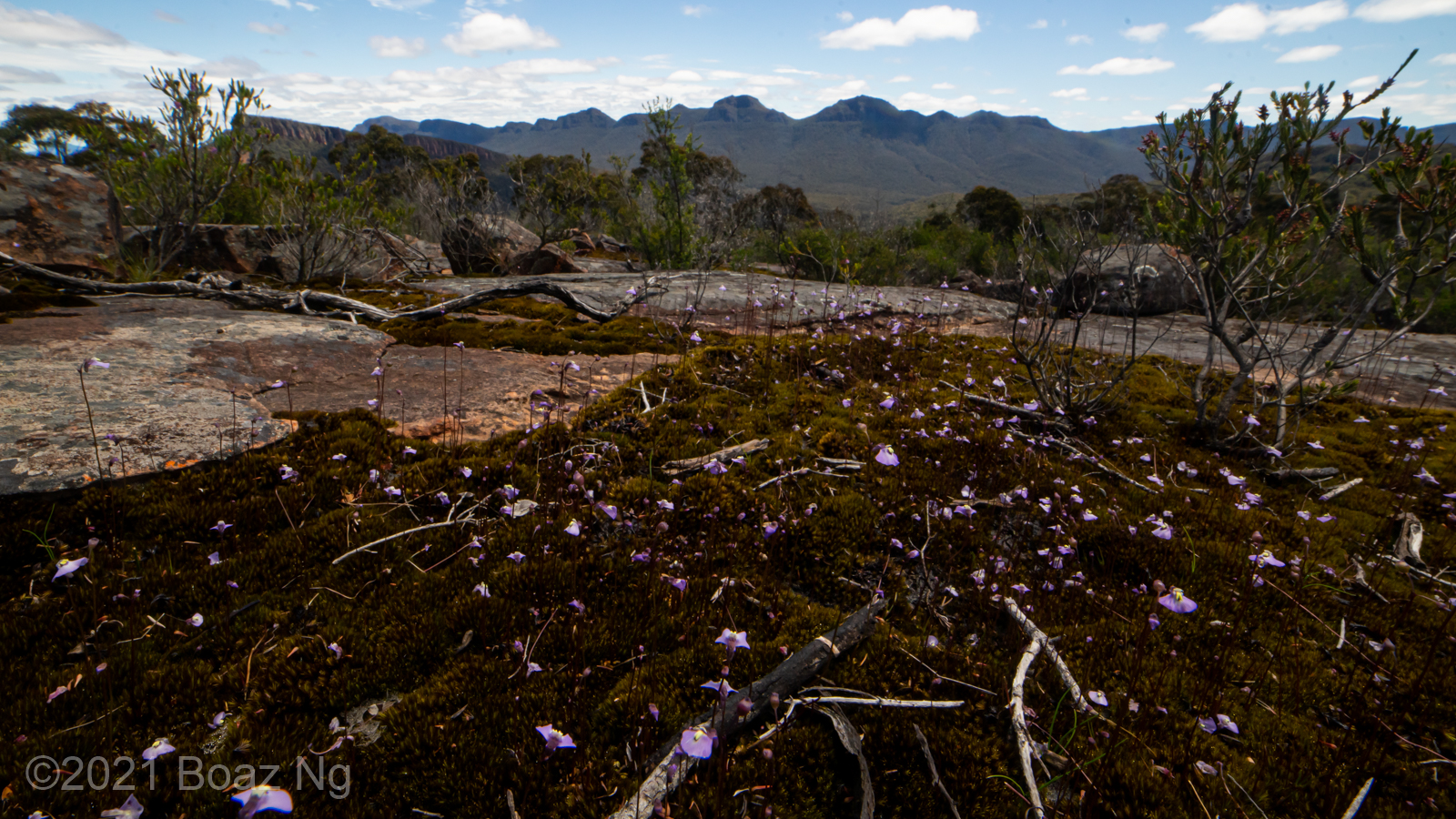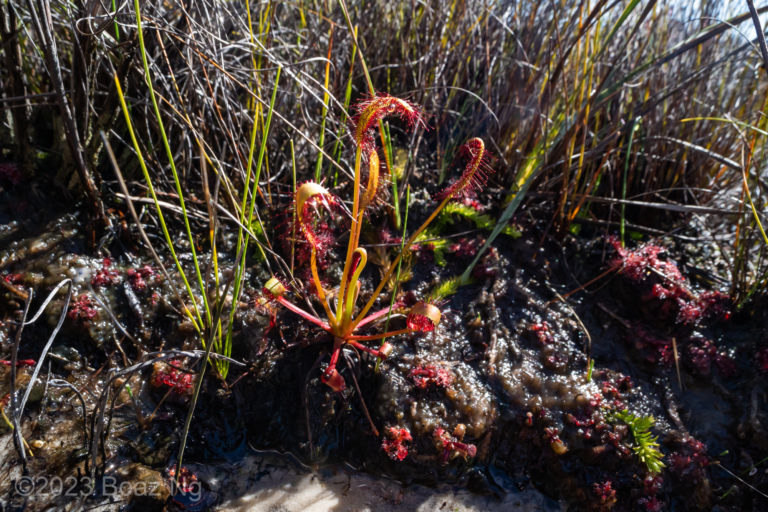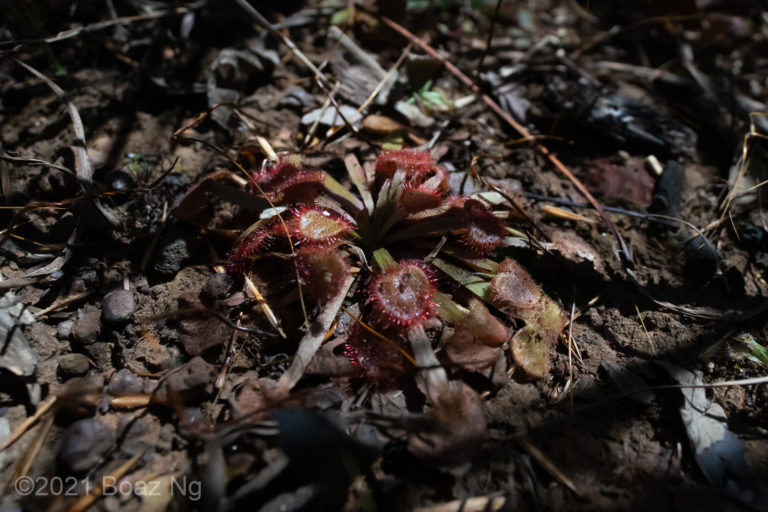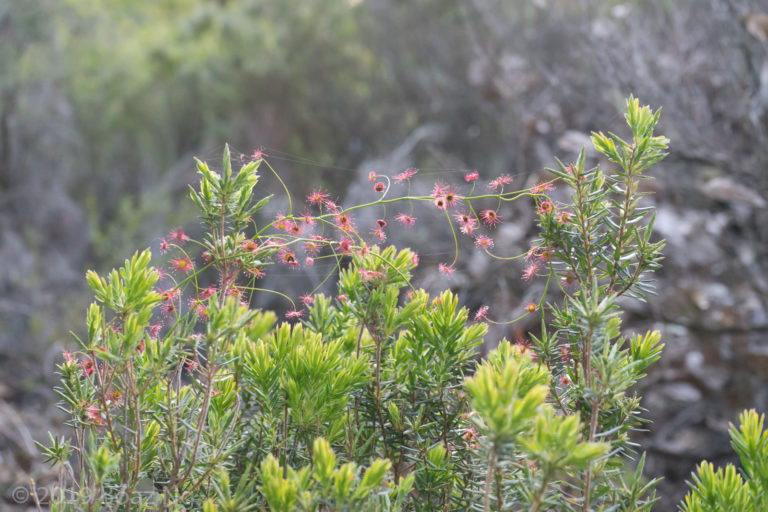In the last months of 2020, I ventured into the Victorian countryside to document the carnivorous plants that grow there. I found several newly described taxa and learned so much about the remarkable niches of these plants.
The Grampians mountain range rises abruptly out of the plains of the Wimmera, dominating the horizon with its dramatic profile. It is known for its biodiversity, with its topographic variation and high rainfall promoting the formation of countless geographic niches.
My goal for the day was to find more populations of Utricularia grampiana. While the type location of the species is well known, it’s extent throughout the entire range, with its many isolated peaks, isn’t too well characterised. I opted for a long walk through the Mt Difficult range, which was a section of the park I hadn’t visited before (also it sounds pretty cool).
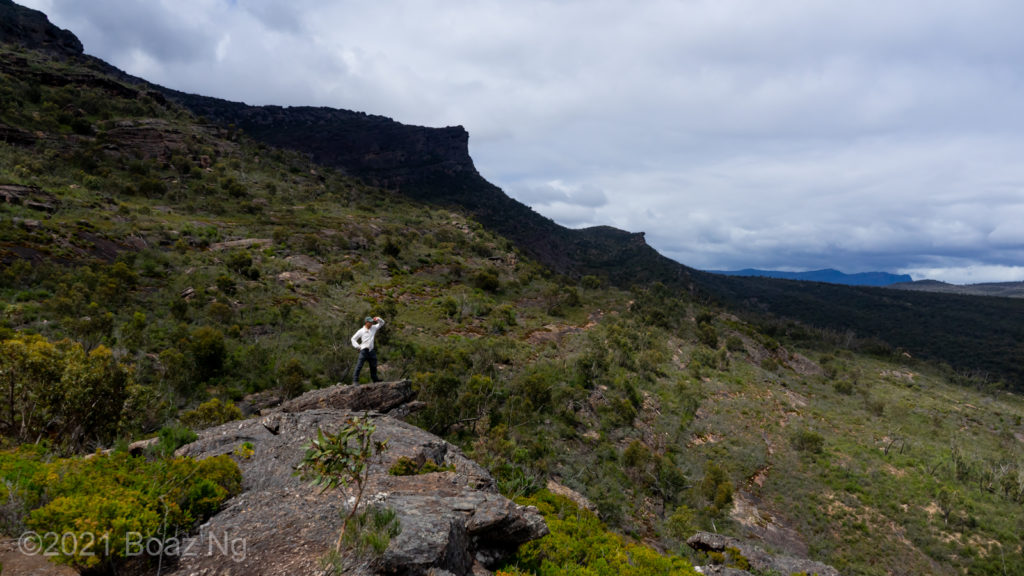
Arriving at the carpark early in the morning, I soon discovered that this was going to be no easy stroll. At the beginning of the walk, the path suddenly veered upwards as the ascent of the mountain began. I was impressed by the sandstone geography, which always produces scenery that conveys the dramatic history of the region. The clear layers of sediment were thrust at an oblique angle, displaying the slow but powerful drama of geologic uplift that occurs over millennia. Sedimentary rock is prone to weathering and also produces the most striking cliffs so rich in character, features I dearly miss of Sydney and which are absent in the boring granite of Melbourne.
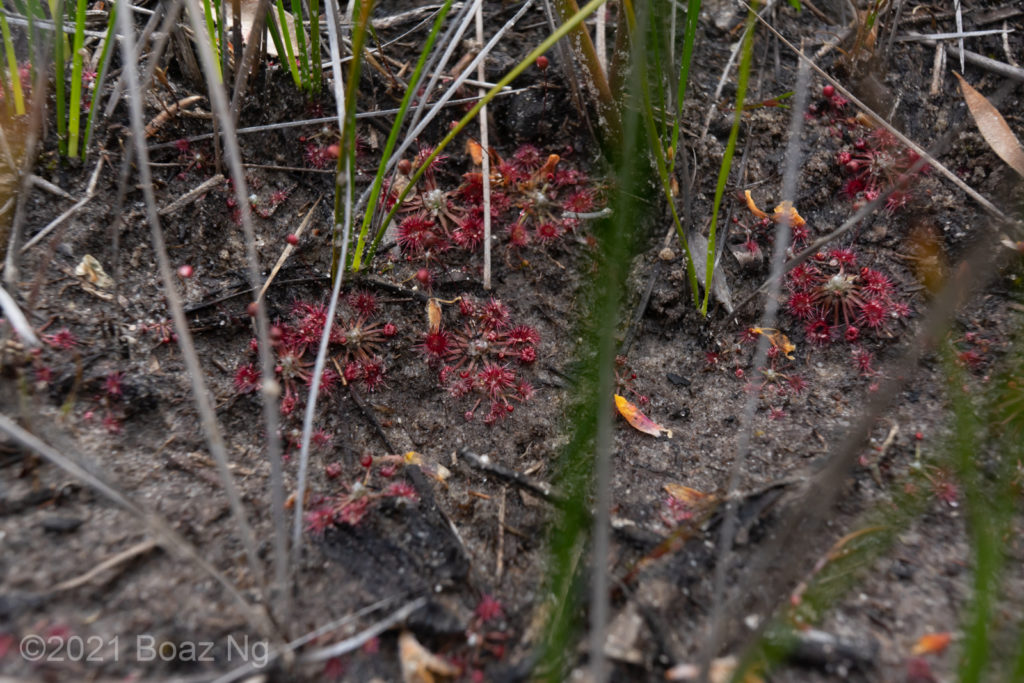
Drosera pygmaea 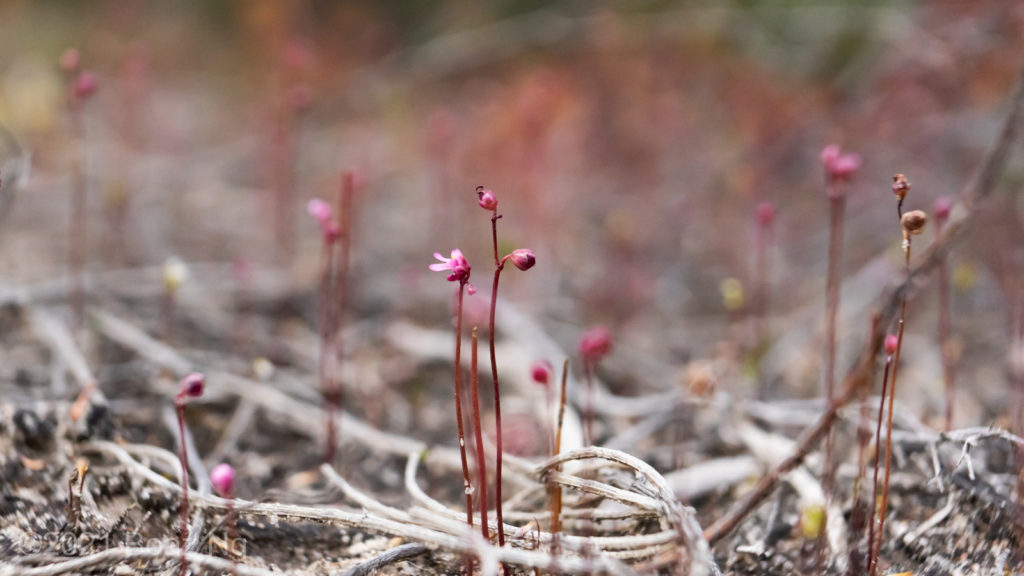
Utricularia tenella 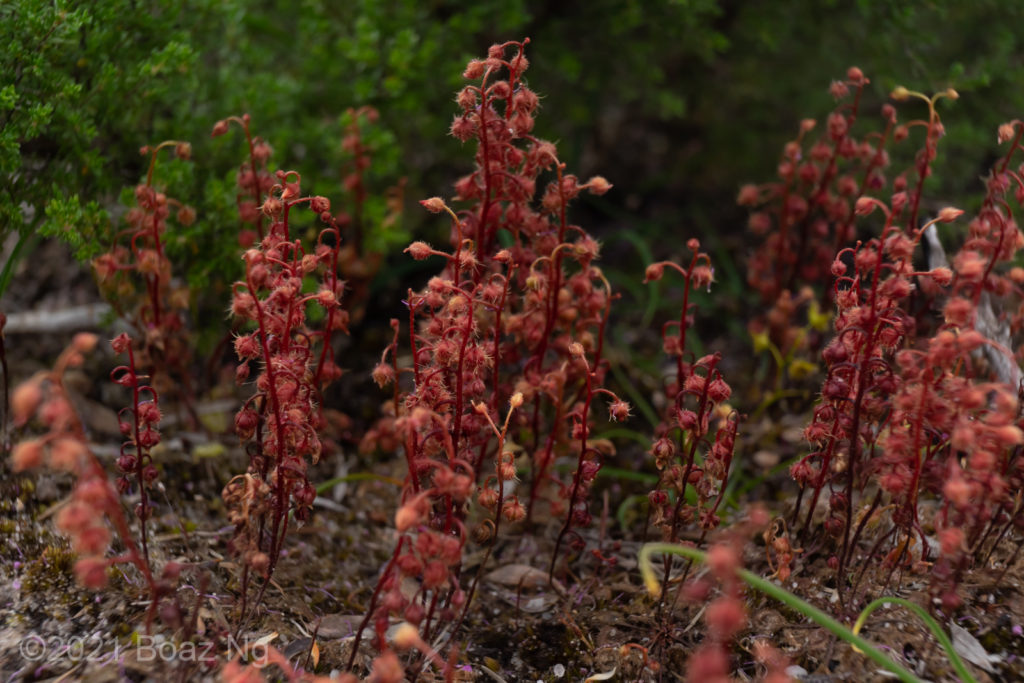
Drosera glanduligera 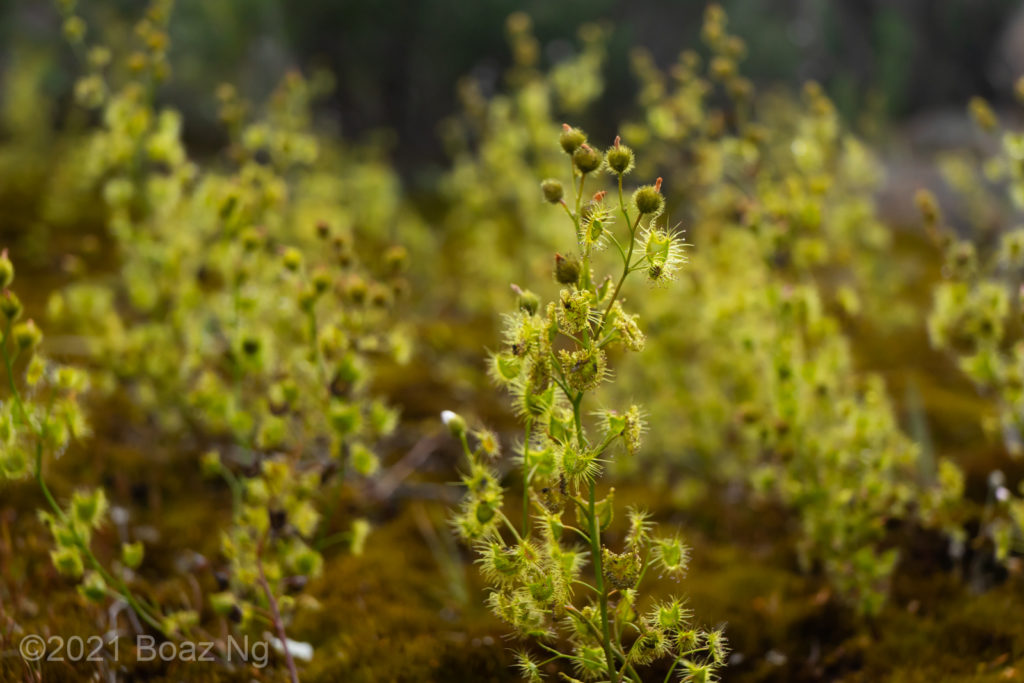
Drosera gunniana
As I reached the lower plateaued shelf of the range, the walk flattened out and I noticed water seeping from the heathland onto the trail. Immediately I got excited as I knew that it was exactly the kind of niche were carnivorous plants usually grew! I soon noticed some green stems in the scrub and discovered that they were D. gunniana. I was surprised to see it growing elevated off the plains, and confirmed my suspicion that its niche includes seepages in addition to flat woodland. As usual, rosettes of D. pygmaea were scattered here and there and the persistent flower stalks of D. glanduligera could be seen, sometimes in high densities. I also saw some flower buds of Utricularia tenella, but only found a single open bloom (although I didn’t look too hard).
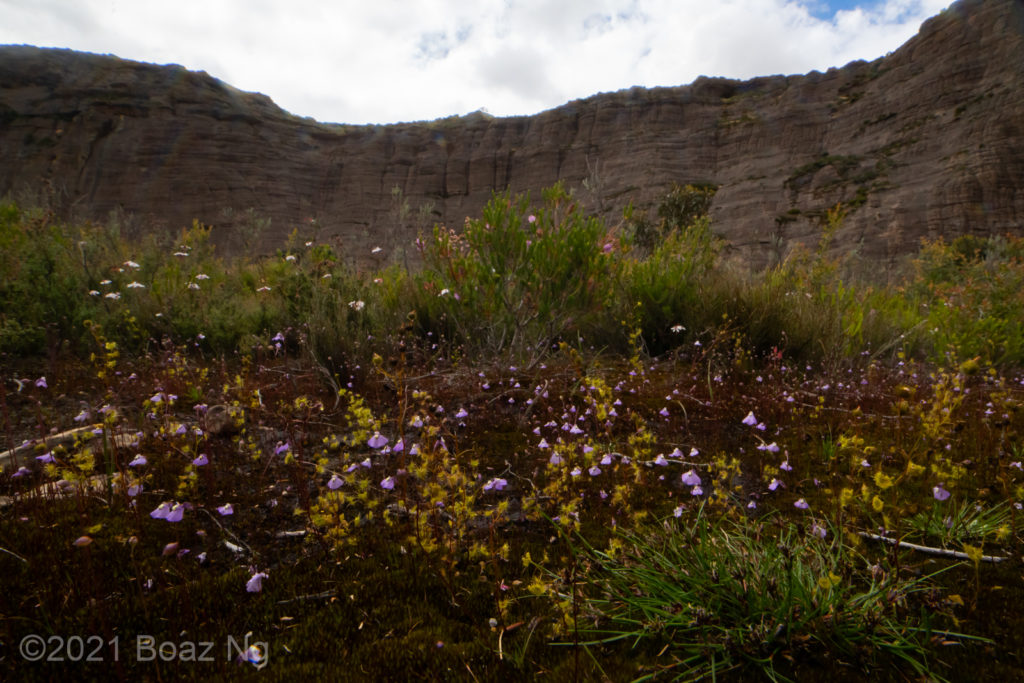
It wasn’t long until Utricularia grampiana started appearing in the wetter sections along the trail. Initially there were just a few blooms but as I soon I was surrounded by hundreds of flowers as I passed a very wet section of heathland beneath the cliffs. The blooms grew alongside D. gunniana and were very vivid against the dark peat.
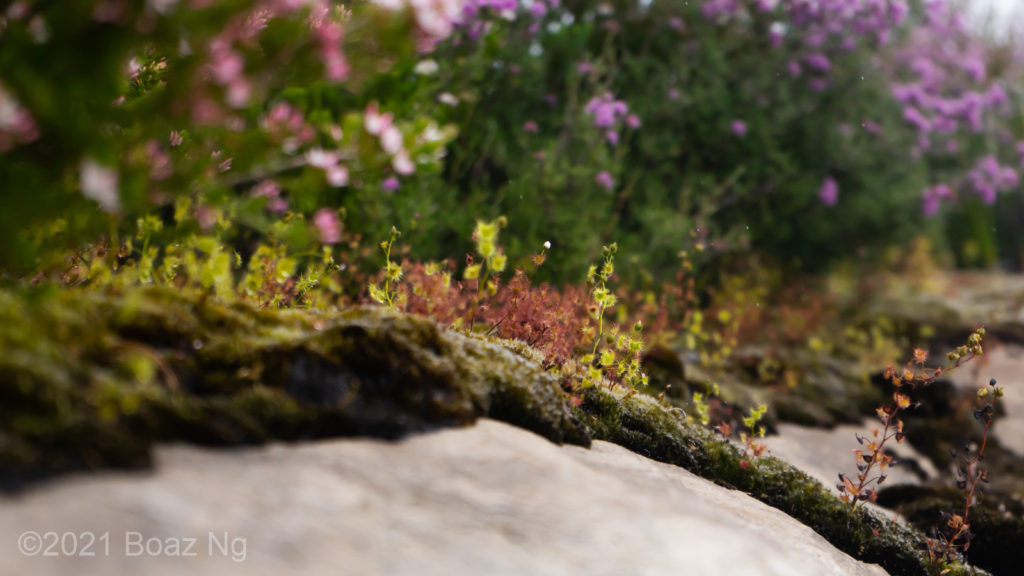
My sense of whimsy soon dissipated as the trail climbed to the ridges above. Every now and then, patches of Drosera auriculata and D. gunniana appeared in the mossy seepages. These were especially beautiful as they were set at the edge of colourful bushes of wildflowers. A slight intermittent drizzle had developed and I had to be extra careful not to slip on the increasingly steep trail.
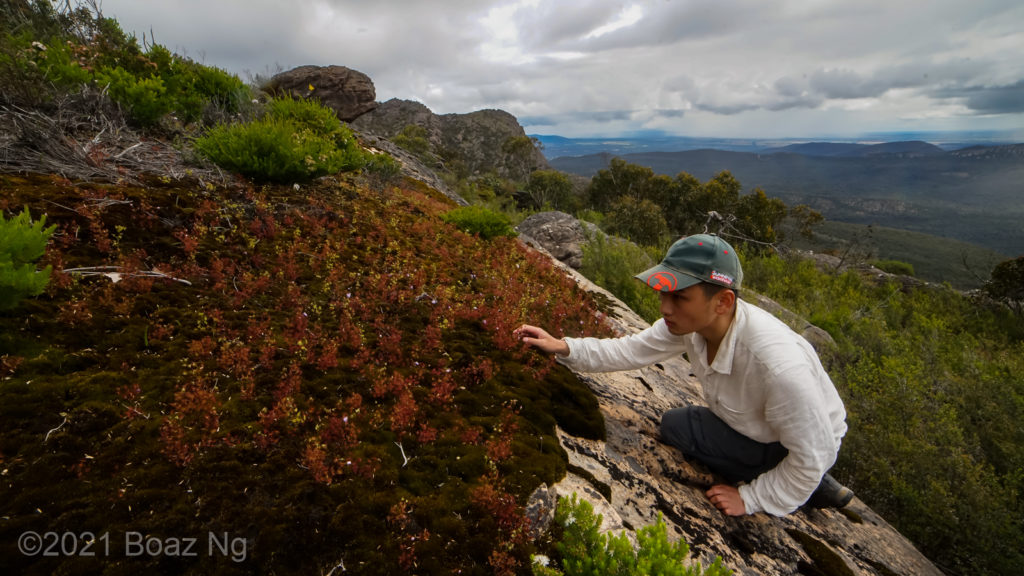
After some strenuous walking, I finally reached the top of the ridge and was met with the most breathtaking sight. Amongst the grandeur of the distant peaks, the exposed rock faces were filled to the brim with carnivorous plants. The seepages were coloured by the flame red stems of Drosera auriculata, intermixed with bright green D. gunniana and purple blooms of Utricularia grampiana, their palettes intensified by rain. With the sharp breeze on my face and adrenaline coursing through my veins, I perched myself on the platforms to inspect the plants closer and really felt alive.
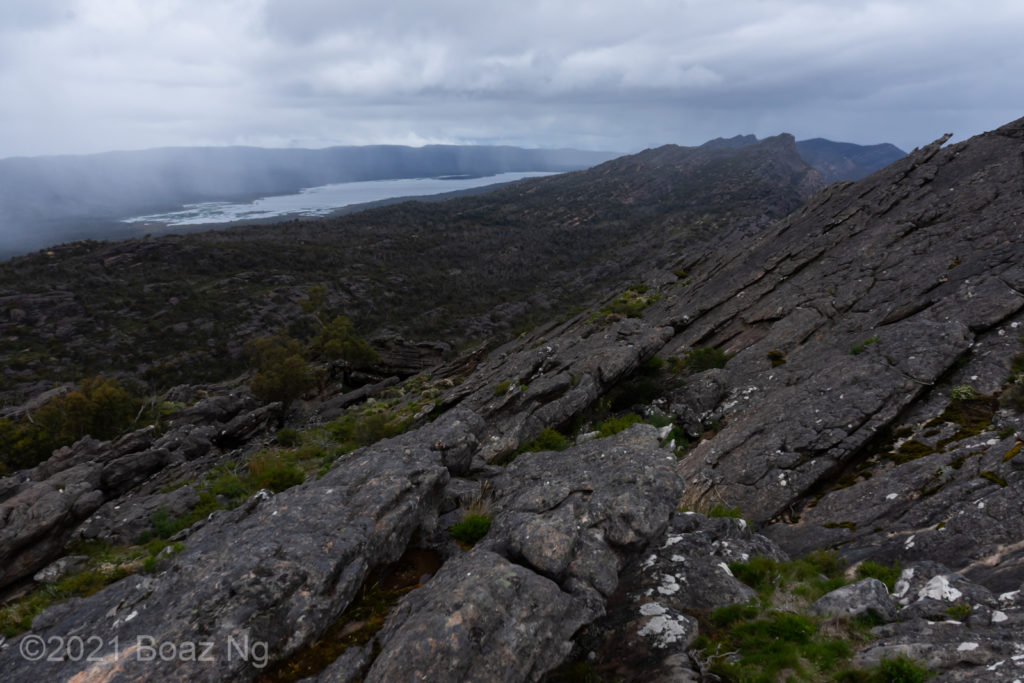
After a bit more walking, I finally reached the summit of the range and was immediately buffeted by strong gusts and rain. Retreating back into the sheltered slopes, I began the long trek back to the car park with only carnivorous plants to keep me company.
The following morning I awoke early to visit another location within the national park which is well known for its Utricularia displays. As I drove, I noticed that the sky was gloomy with low clouds obscuring the peaks above. Soon, I was in thick fog as the road began to climb the mountain. Half way up, the road passed by some exposed rock platforms with shallow seepages that ran off them. I didn’t even need to leave the car to see tall stems of Drosera auriculata hanging off the edge.
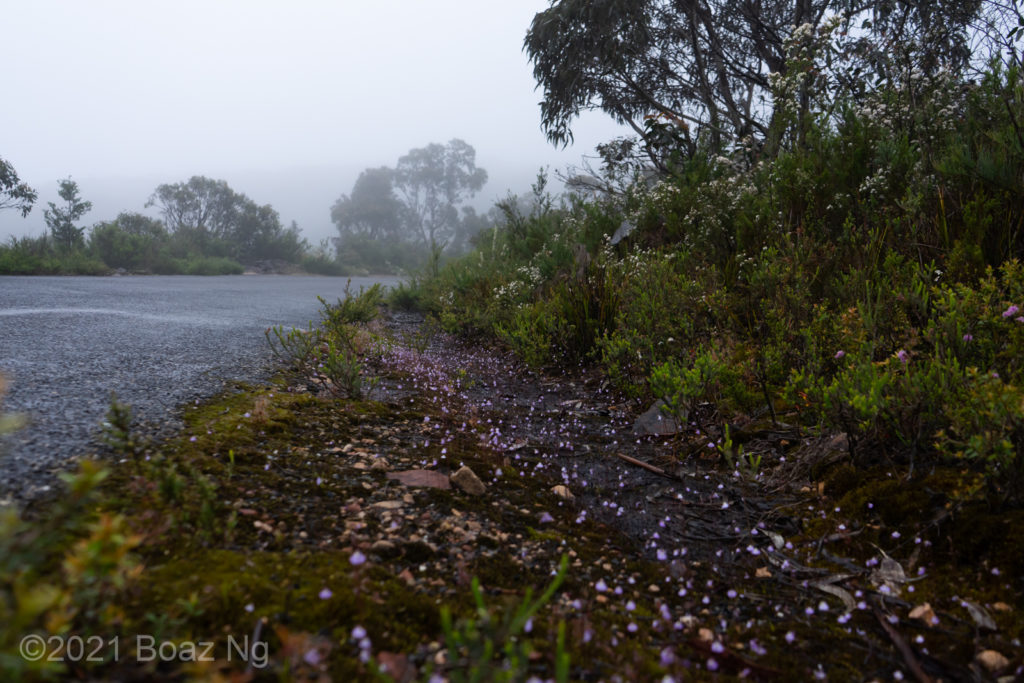
As I got out of the car, I noticed that the gutter on the side of the road was filled with Utricularia grampiana. Encouraged, I clambered onto the rock platform where I spotted D. auriculata all around me. The local form was coloured blood red and looked particularly sticky with the settled morning dew. Around the creek I saw the bright green stems of D. gunniana again but was msot excited when I spotted another species amongst the moss. This was was the lowland form of Drosera gracilis, a species known for its slender stem and persistent basal rosette. It was amazing to see three taxa within the D. peltata complex growing side by side.
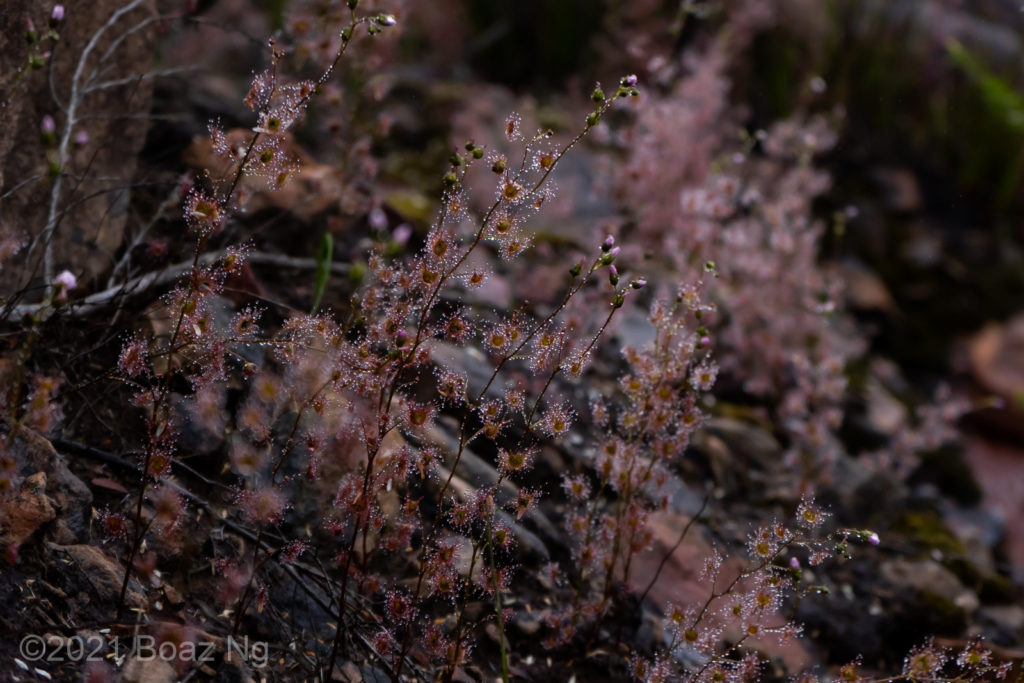
D. auriculata 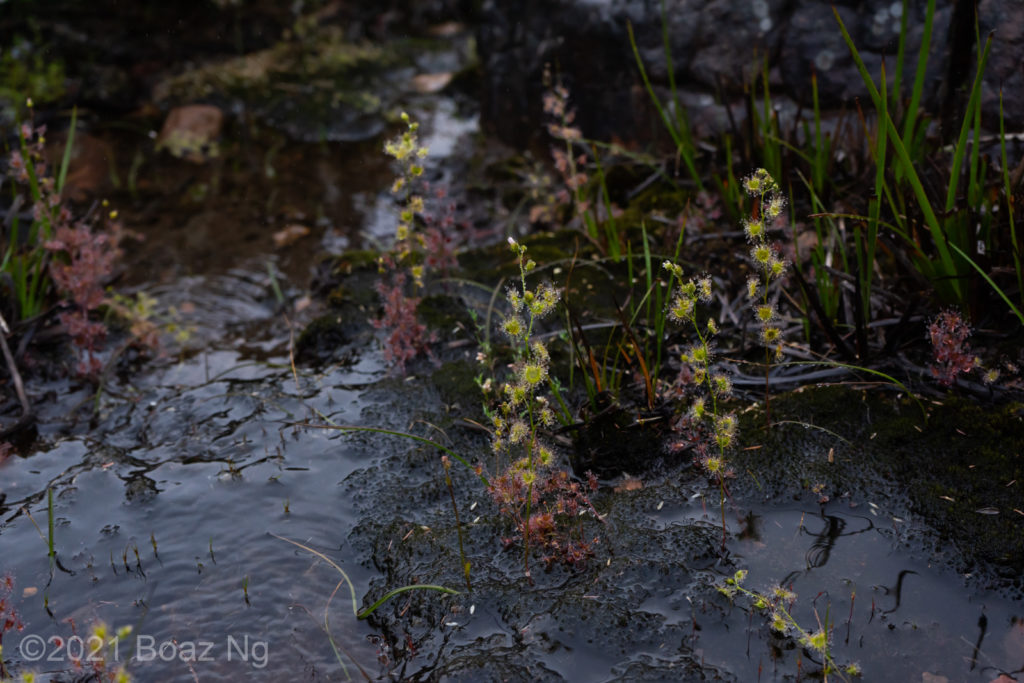
D. gunniana 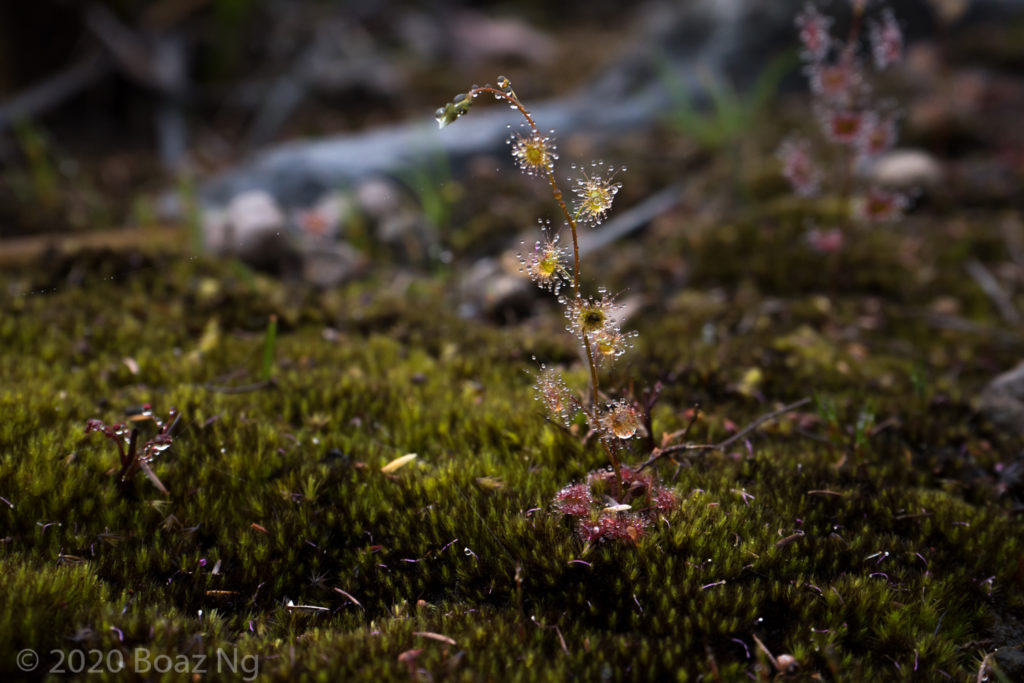
D. gracilis
Eventually I reached the car park and continued to the summit on the service road. Water was still seeping out from the heavy rains before and small waterfalls had formed on the cliff faces that lined the trail. In the ledges grew D. auriculata and U. grampiana, which reminded me somewhat of windowsill gardens.
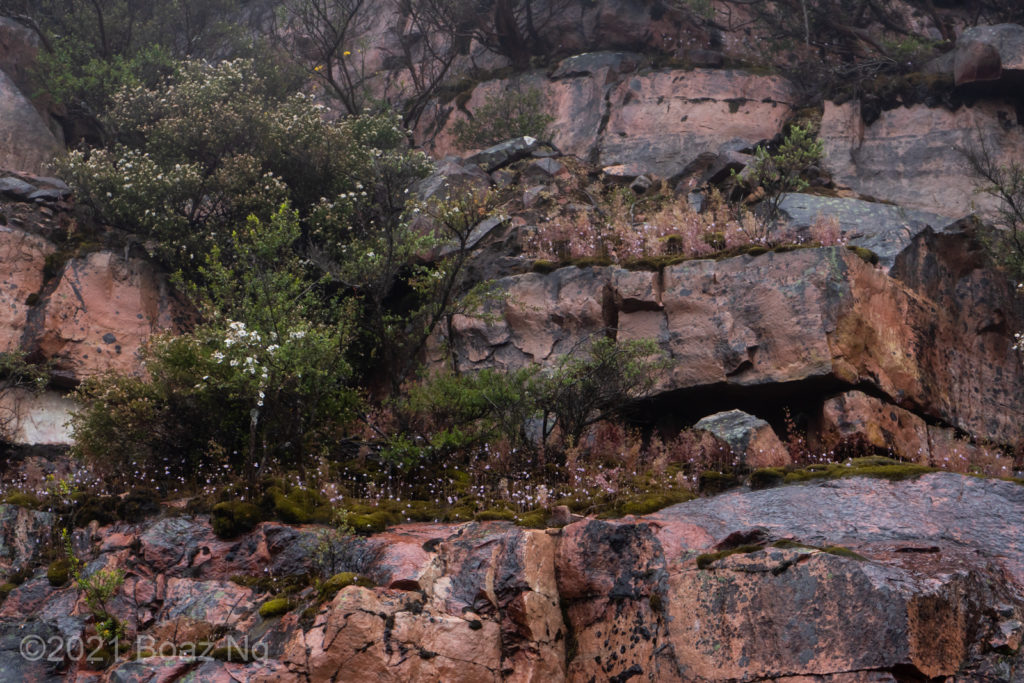
Soon the fog rolled back in and shrouded the mountain with a sense of mystery. Given the total water saturation of the air, beads of dew had deposited on every surface – including on the carnivorous plants themselves. The beads of condensation augmented the natural mucilage of Drosera auriculata, which looked especially lustrous that morning. On Utricularia grampiana, the water that accumulated on the bloom weighed down the stalk to a gently arching formation. More beads of water formed on this arch and the plants looked rather like a necklace adorned with jewels.
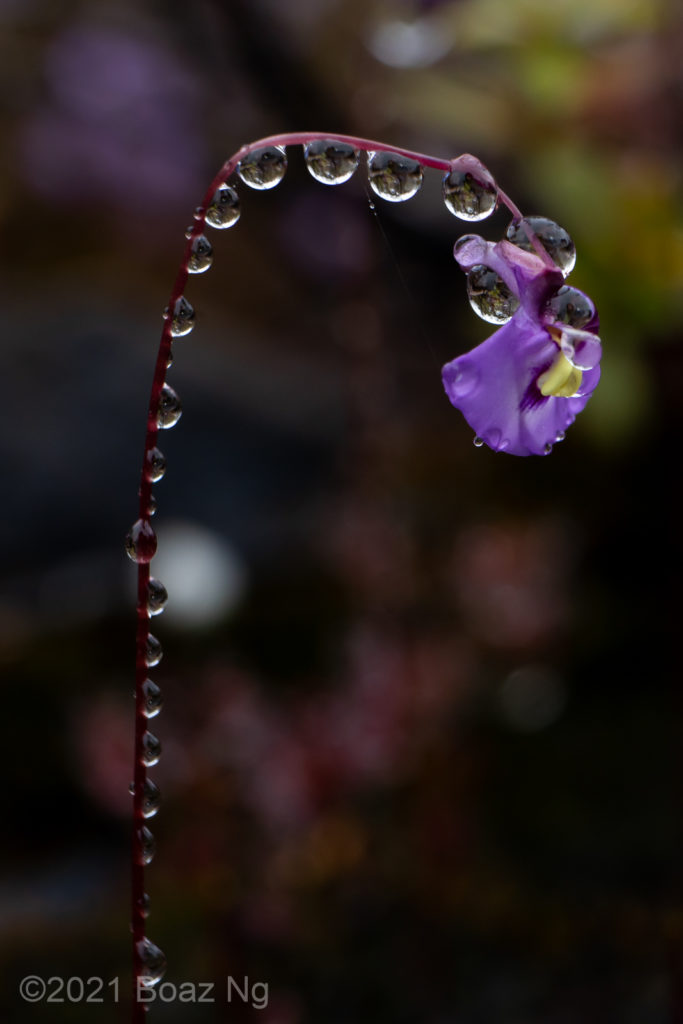
It was a very nice stroll to the top of the mountain, which was capped with a gently undulating plateau. I decided to continue onwards on the ridge-top trail, taking me further into the range that I had previously ventured. Not long after the fog suddenly lifted and I was presented with stunning panoramic views of the cliffs extending into the distance.
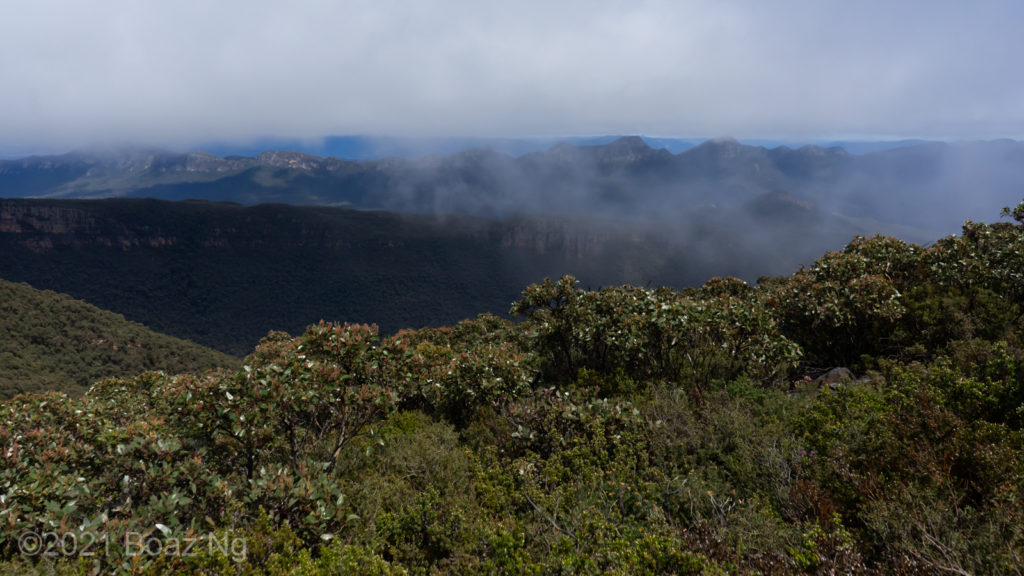
The area was placed at around 1,000 m in elevation, meaning that the microclimate was cold, damp and at times, very exposed to wind. This caused an interesting dwarfing effect on the D. auriculata that grew there, which were much shorter than the ones in the lower slopes. Additionally were some specimens that grew up to seven stems from the same basal rosette, which is very unusual for this species.
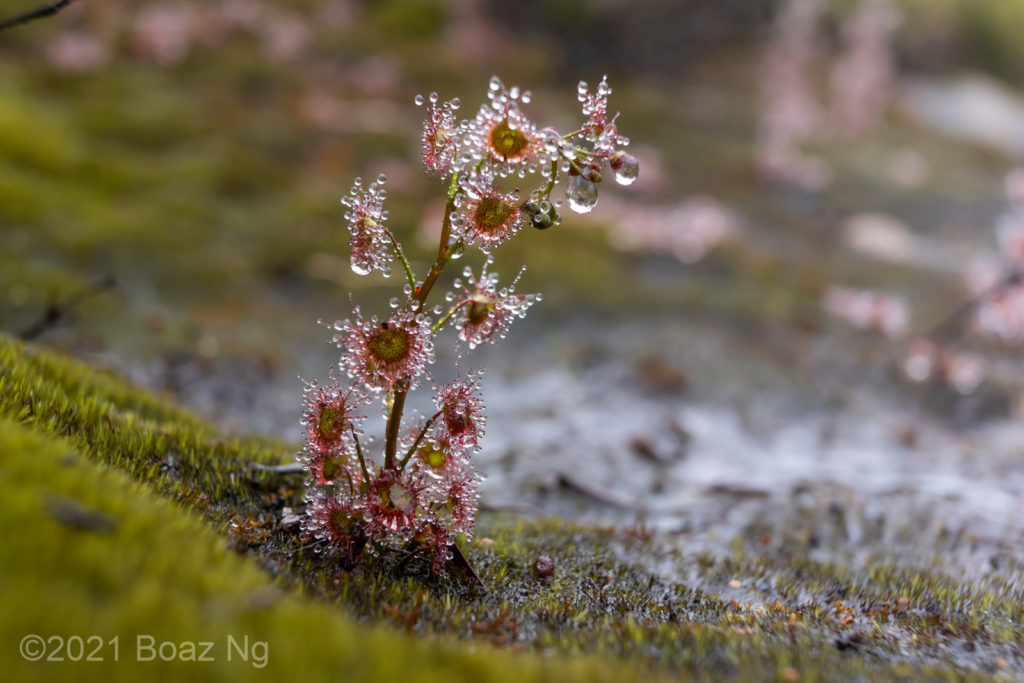
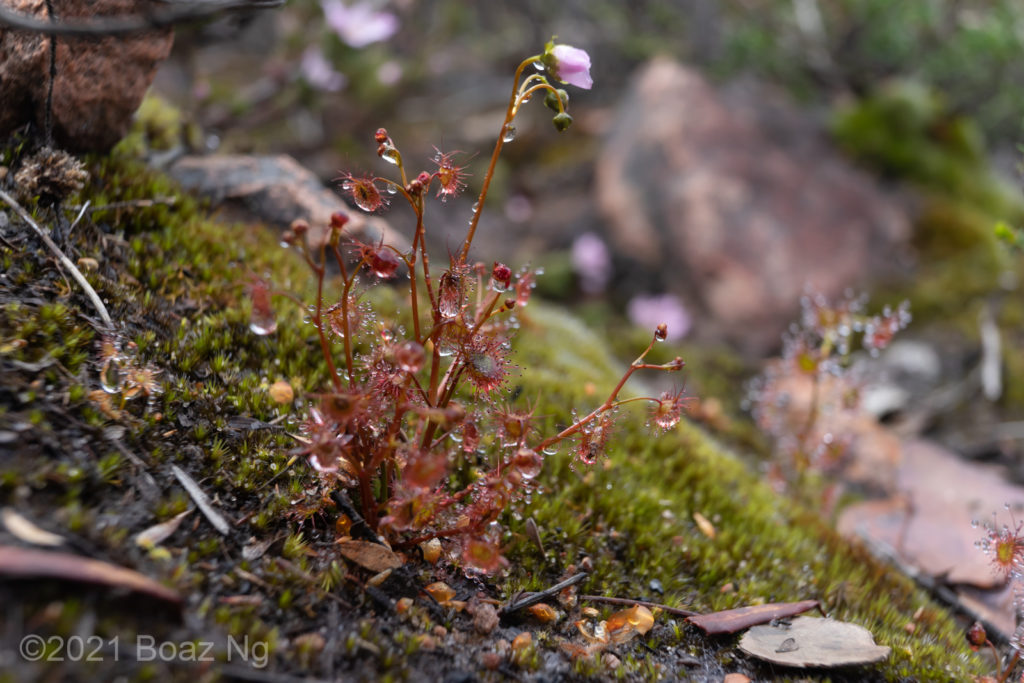
I also noticed some bright red rosettes peeking out from beneath the bushes. I was surprised to find that they were D. aberrans, a winter growing tuberous sundew. In the lowlands, the species had long entered dormancy but the cold and wet climate here had presumably delayed their growing season.
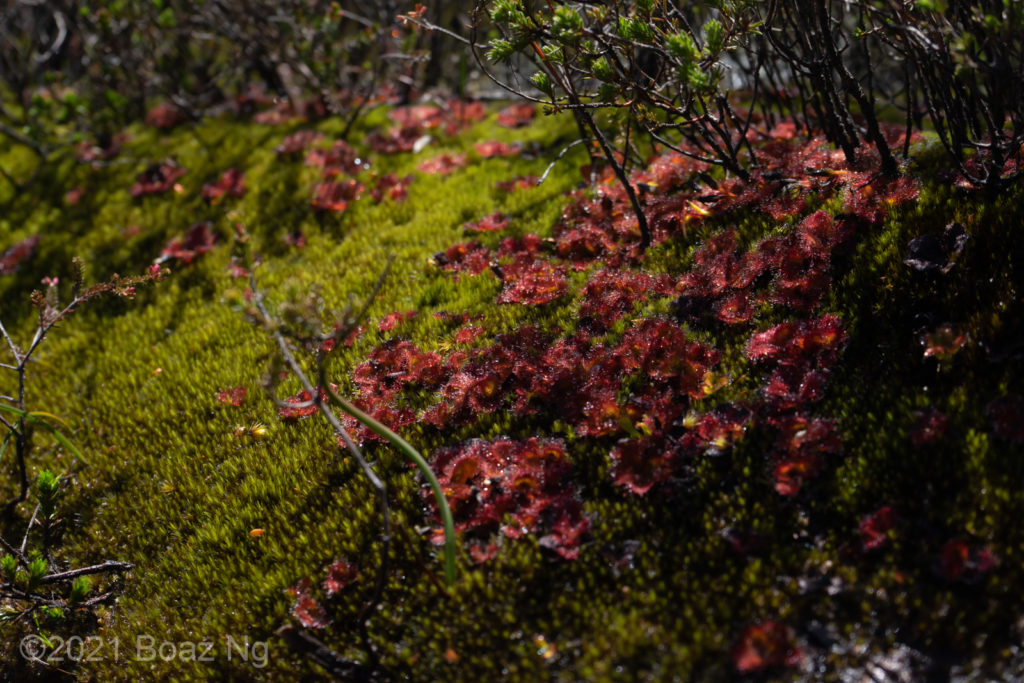
I continued along the trail enjoying the crisp air in my lungs and the gentle warmth of the spring sun. Soon I found myself at a particularly rocky section and saw thousands of Utricularia grampiana flowering in every crevice and seepage. The area was alive with colour from the purple blooms of the bladderworts and the red stems of sundews intermixed with greens, yellows and whites from the other spring flowers. I simply paused to take in the glorious surroundings and the magical aura of the perfect morning.
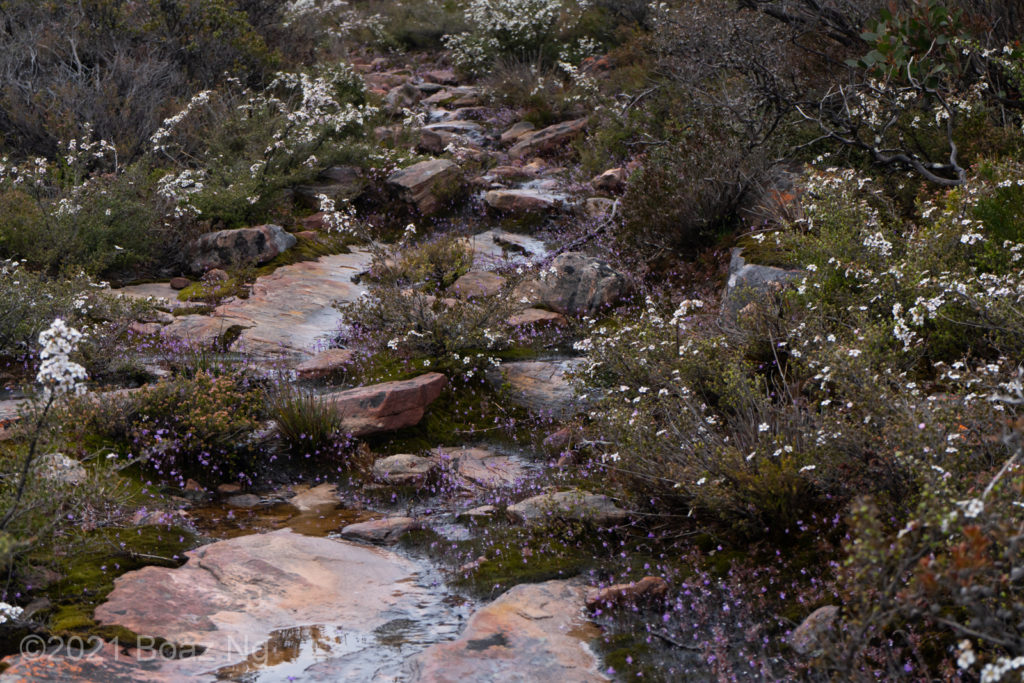
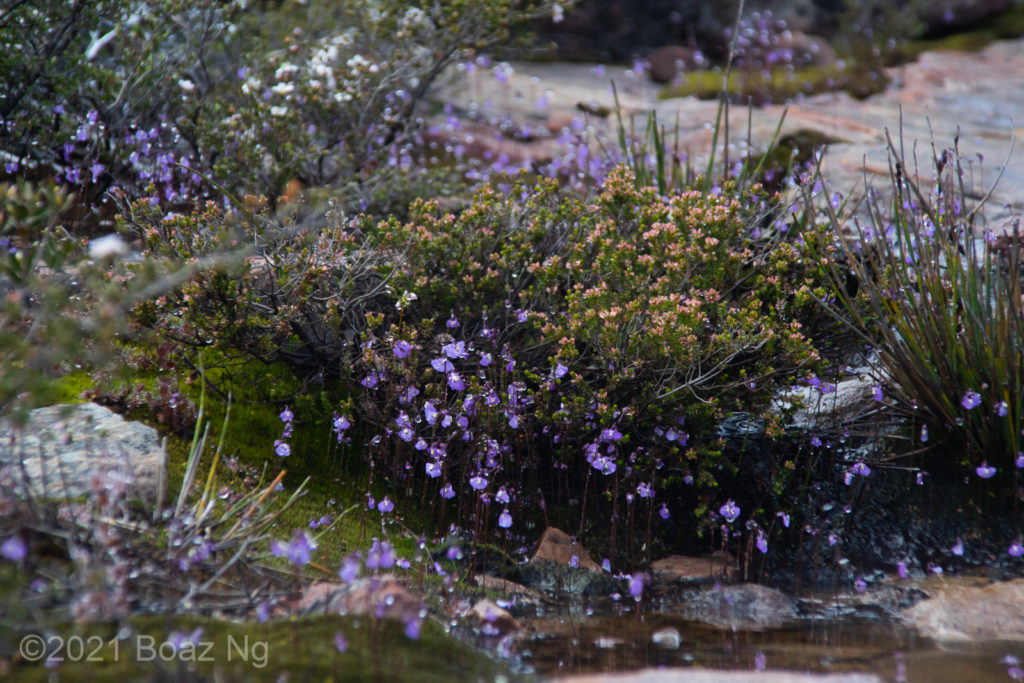
It was about time I headed back down the mountain since I had other activities planned for the day. Now that the fog had lifted, the dramatic scenery of the Grampians was on full display. I stopped again at one of the rock platforms of the lower slopes to photograph the species amongst the grandeur of the surroundings.
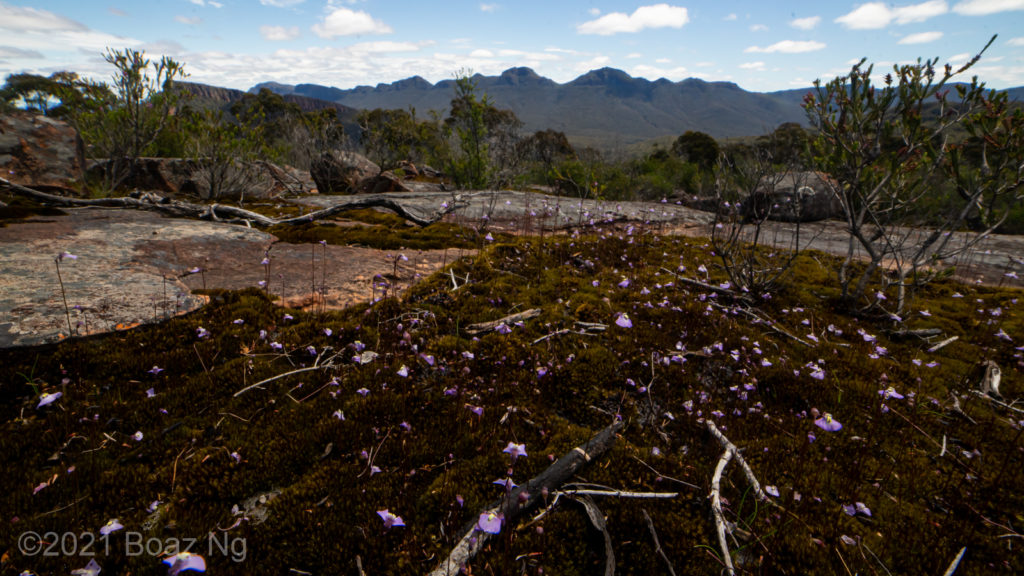
The rest of the day was spent mainly looking for rare orchids in the heathland flats. Unlike in the peaks, these areas were much less wet and steadily drying into the summer. I did manage to find some interesting examples of Drosera gunniana, in shades of orange and red. These are especially contrasted with the typical green forms I had found in the mountainous seeps.
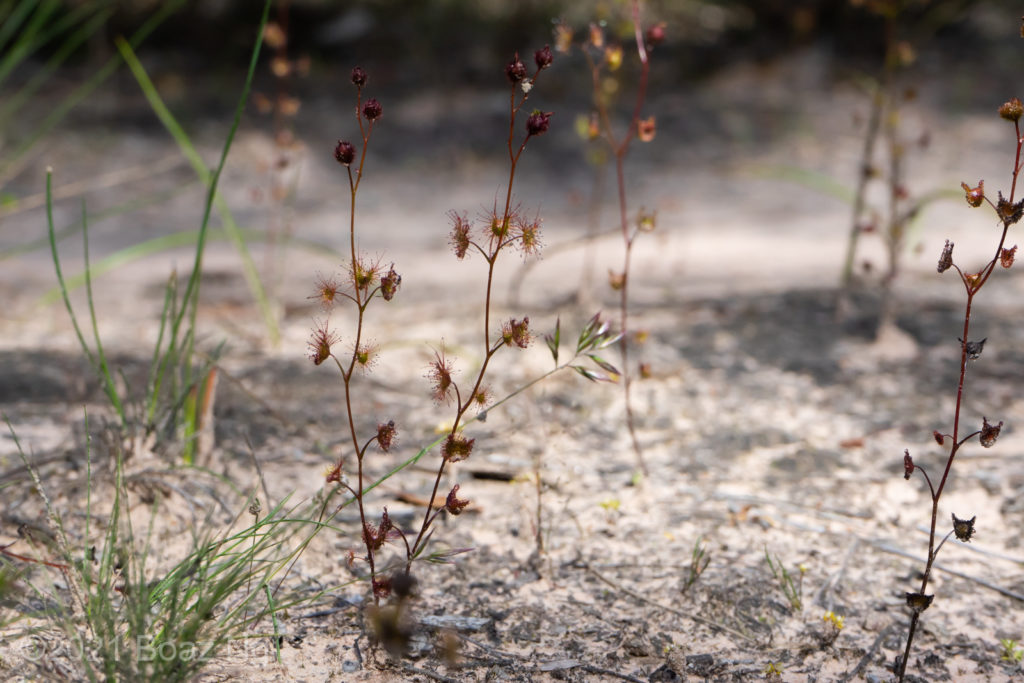
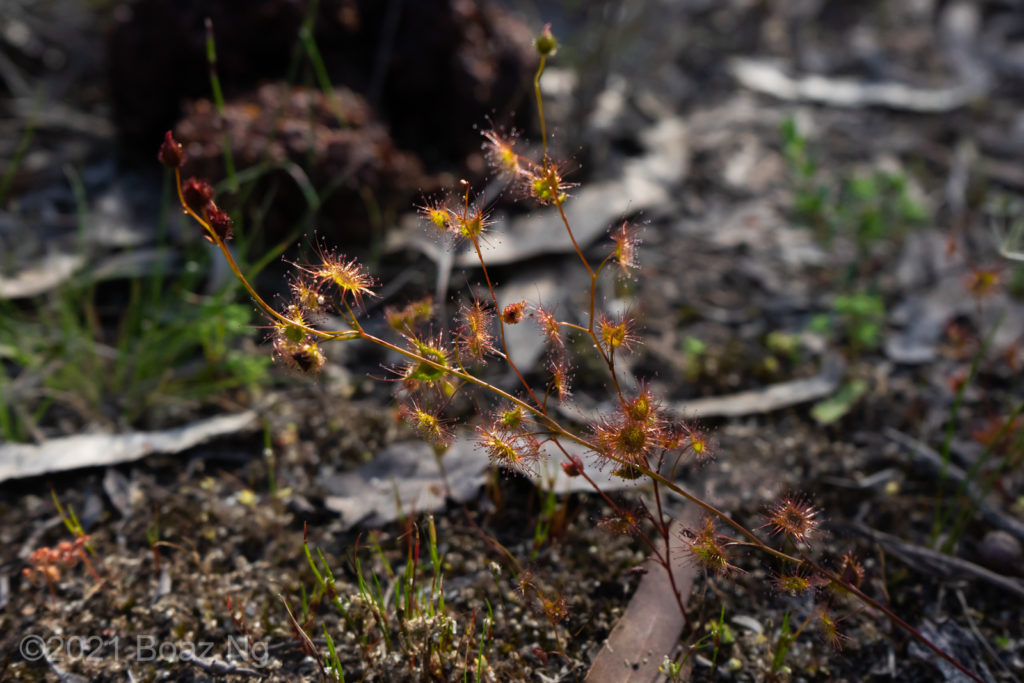
As the afternoon crept in, I set off towards the eastern edge of park to spend the night in a campsite I had stayed at two years prior. I awoke early to the risk of a storm warning and knew that I only had an hour or two to visit a site I wanted to revisit before the weather front would move through and make it too dangerous. At pace, I hiked up the trail half way up the mountain before abruptly turning off into the gully. I pushed into the sparse scrub until I reached the small creek, hoping to find the plants I had come to see. At the top of a small cascade I spotted them – a tiny patch of Drosera binata growing amongst the ferns lining the sandy banks. Such perennial sites for the species are very rare in Victoria, where D. binata is mostly restricted to swamps or creeks that are only accessible after bushfire and I was glad that this location seemed to be persistent year after year.
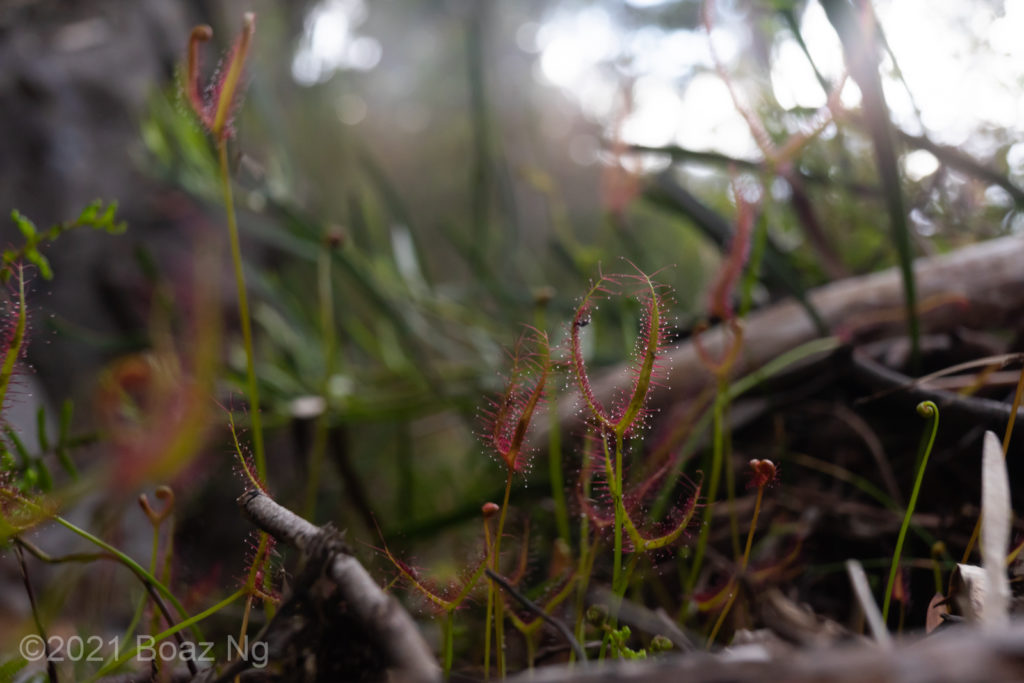
With the thunderclouds rolled in, I made it back to the car and left the Grampians National Park, rejuvinated with the healing effects of nature. It was about time I headed back to Melbourne to work but before that I had one more site to check out. As I drove past Ararat, the profile of Mt Langi Ghiran appeared in view and it wasn’t long before I was once again surrounded by bushland.

